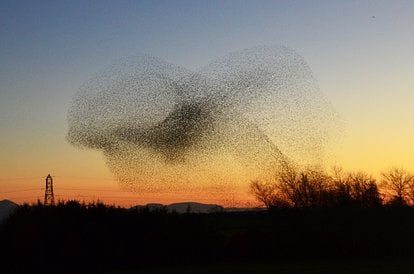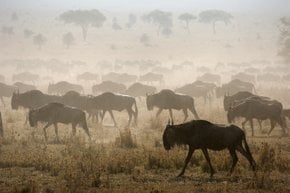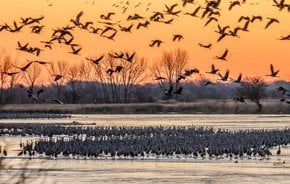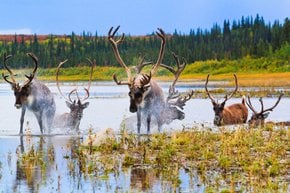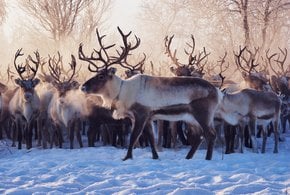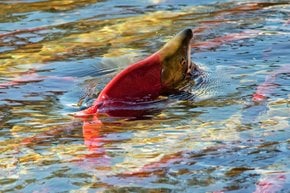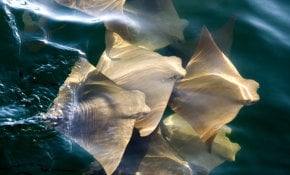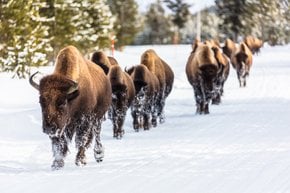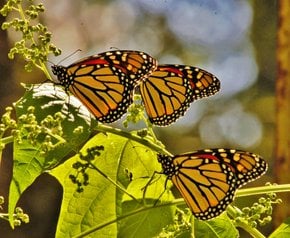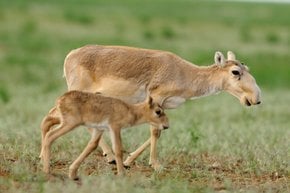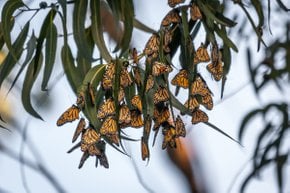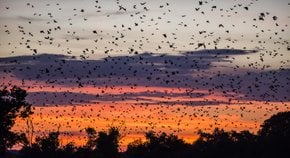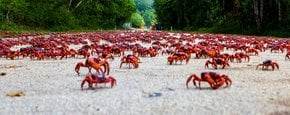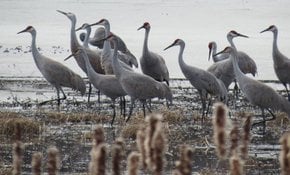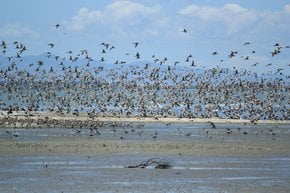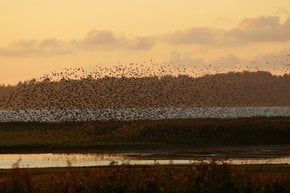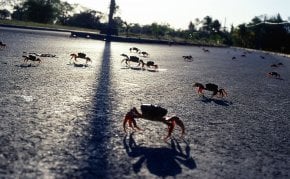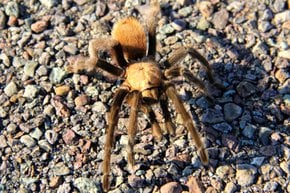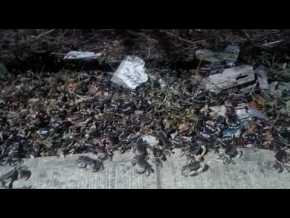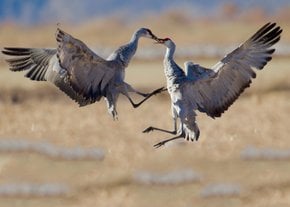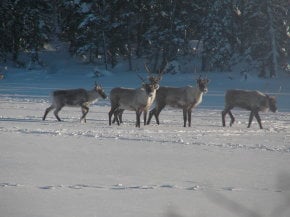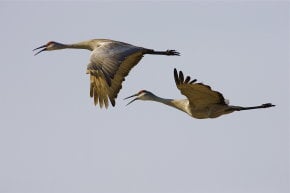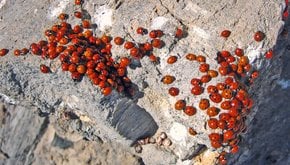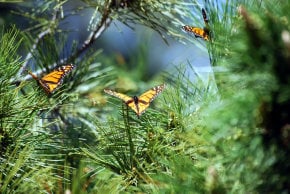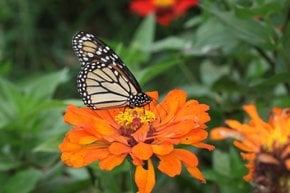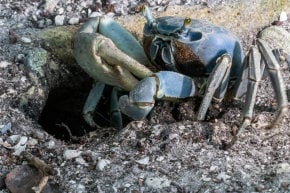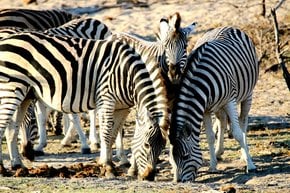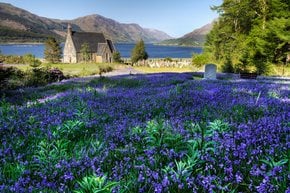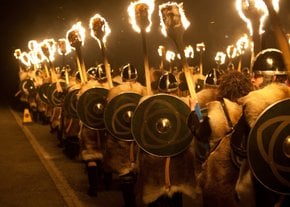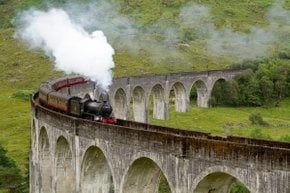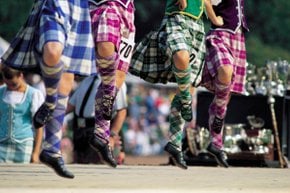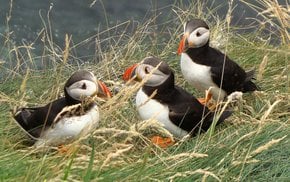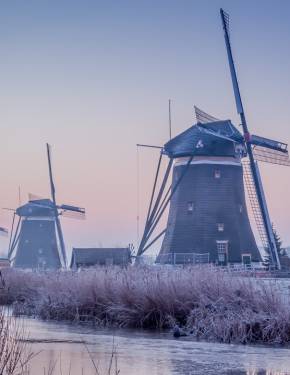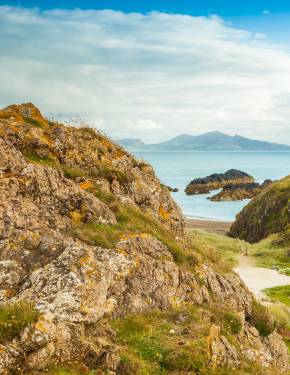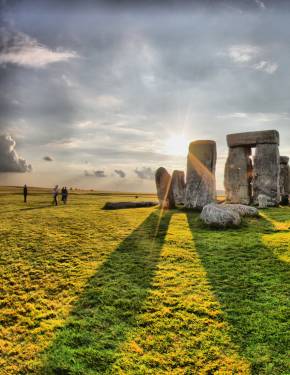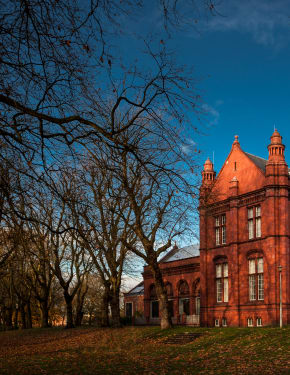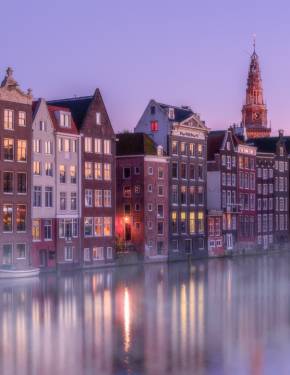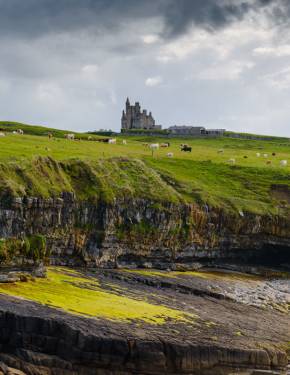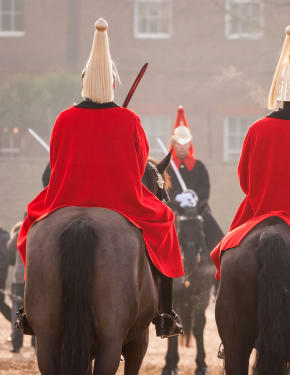Starling Murmuration in Scotland 2025-2026
A stunning sunset show performed by migrating starlings
Best time: November–February
If you already know what starling murmuration is, or at least heard of such a phenomenon, you must know it's quite a show. Huge swarms of birds form beautiful shape-shifting clouds, which swirl in the sky. Every autumn and winter, this sunset spectacle is performed by migrating starlings in Gretna at Dumfries and Galloway. The regularity of these shows proves that the birds are really into that village in the south of Scotland!
The scientists don't know for sure how the birds choose the stage where to perform and why. According to one theory, gathering in such huge flocks and flying in such a hypnotizing manner helps birds protect themselves from predators, which may get confused and be unable to attack. Another theory implies that it's easier for the birds to stay warm, conserve energy, and communicate about good feeding grounds when flying in a swarm.
The best time to see starling murmuration
The best time to watch the natural wonder is deemed November, as the starling population during this month increases considerably thanks to migrating birds, which arrive from further North in Europe. Birds usually stay in Scotland throughout December, January, and also February. The best time of the day is usually at sunset or just before dusk, as birds get ready for roosting.
Where to see starling murmuration in Scotland
Dumfries and Galloway in South Scotland is among the best areas in Europe to observe the mesmerizing phenomenon. While millions proceed with their journey from Scandinavia further to England and even further south to Greece and Italy, hundreds of thousands of starlings choose to winter along the Anglo-Scottish border in Gretna. In the past, their quantity was even greater, but in recent years, the overall number of starlings in the United Kingdom has decreased by 65 to 80%.
RSPB Mersehead, located on the scenic north shore of the Solway coast in Dumfries and Galloway, is one of the best places in Scotland to see a murmuration. The area is also home to breeding waders and plenty of wintering waterfowls. Gretna Green Birdwatching site is another spot, attracting birdwatchers with their cameras and binoculars. The roost site is usually just east of the M6 motorway.

